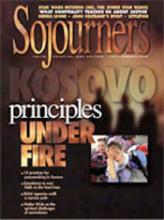Biblical scholars Marcus Borg and N.T. Wright live on two different continents and seem even further apart in their theology of Jesus. Borg is the liberal American revisionist; Wright is the conservative British traditionalist.
Together, they are the Siskel and Ebert of the theological world. In The Meaning of Jesus: Two Visions the scholars almost always take opposite views in 16 alternating essays. The book is seldom dull, but it may be too civil for many readers tastes. If it were a tennis match, it would be remembered for long rallies and skillful play rather than snappy sparring.
As the apologist for traditional views, Wrights position is almost always predictable. The Nicene Creed encapsulates the tenets for which he argues, drawing generously from his understanding of historical Christianity. But at times hes so skeptical of modern biblical methodology that he refers to the scholarly lens known as the hermeneutic of suspicion as the "hermeneutic of paranoia."
Borg, on the other hand, thrives on shaking up the traditional paradigms. For instance, he concedes that Jesus was resurrected, but says it wasnt necessarily a bodily resurrection. Its this kind of revisionist viewpoint that often catapults Borg into headlines.
But readers might be surprised by how traditional Borgs beliefs sometimes are and how conciliatory Wright sometimes is. In terms of the historical Jesus, the scholars find common ground on two key points: first, that Jesus message emphasized the kingdom of God, and, second, that Jesus disruptive behavior in the temple during his final days was the single-most factor prompting his arrest.
Read the Full Article
